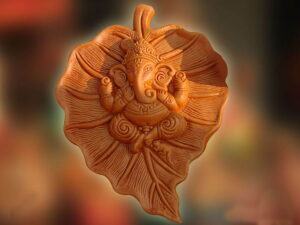
In the vast tapestry of religious beliefs and cultural exchanges, there are moments of convergence where deities transcend their original boundaries, becoming symbols of universal attributes. One such captivating example is Kangiten, Japan’s adaptation of the beloved Hindu deity, Lord Ganesha. In this article, we will embark on a journey through the enchanting world of Kangiten, exploring its origins, symbolism, temples, and the rich fusion of Hindu and Buddhist traditions.
Kangiten: The Blissful God Kangiten, also known as 歓喜天 (Kangiten) in Japanese, is the Buddhist equivalent of Lord Ganesha. Initially depicted negatively as a creator of obstacles, Kangiten later evolved to embody both positive and challenging aspects. Like Ganesha, Kangiten is associated with overcoming obstacles, wisdom, and success. However, Kangiten’s realm extends to marital bliss, childbirth, and longevity, symbolizing a broader spectrum of life’s experiences.
Origins and Names: Kangiten is known by various names such as Shōten, Ganabachi, and Binayaka. His Sanskrit name is Nandikeśvara. Interestingly, Kangiten’s evolution reflects the amalgamation of Hindu and Buddhist beliefs. Initially, he was viewed as obstructing Buddhist practice, but later traditions distinguished him from obstructing demons, portraying him as a benevolent deity.
Temple Devotion: Japan boasts over 250 temples dedicated to Kangiten, each offering a unique glimpse into his worship. The Matsuchiyama Shoden Temple in Tokyo’s Asakusa district stands as a prominent example. Built in the 7th century, this temple, nestled atop a hill, houses a revered statue of Kangiten, carefully hidden from public view. Similarly, Hōzan-ji Temple near Osaka features a stunning Heian period image of the Dual Kangiten, showcasing the deity’s multifaceted nature.
Symbolism and Worship: Kangiten is associated with bliss, success, and the removal of obstacles. His symbols include the kangidan (resembling a modak), daikon (radish), and kinchaku (a pouch). Worship of Kangiten involves chanting his mantra, performing rituals, and paying homage to his abode, Mount Kailash.
Experiencing Kangiten: Visiting a Kangiten temple offers more than encountering the deity; it’s an immersion into Japan’s rich cultural heritage. Temples like Matsuchiyama Shoden and Hōzan-ji exude tranquility, with serene gardens and awe-inspiring architecture. Observing temple etiquette, such as removing shoes and maintaining silence, is crucial to respecting the sacred space.
A Gateway to Cultural Fusion: Exploring Kangiten temples is not merely a religious experience; it’s a journey into the fusion of Hindu and Buddhist traditions. Japan’s embrace of Kangiten reflects its openness to diverse influences, showcasing the beauty of cultural exchange.
In the temples of Kangiten, we find a remarkable synthesis of Hindu and Buddhist beliefs, encapsulating the essence of cultural fusion. As visitors wander through these sacred spaces, they not only encounter a deity but also witness the harmonious coexistence of diverse spiritual traditions. Kangiten serves as a bridge between worlds, reminding us of the universal quest for wisdom, prosperity, and spiritual fulfillment. So, let us embark on this journey, where the divine and the human intersect, in the timeless realm of Kangiten.

